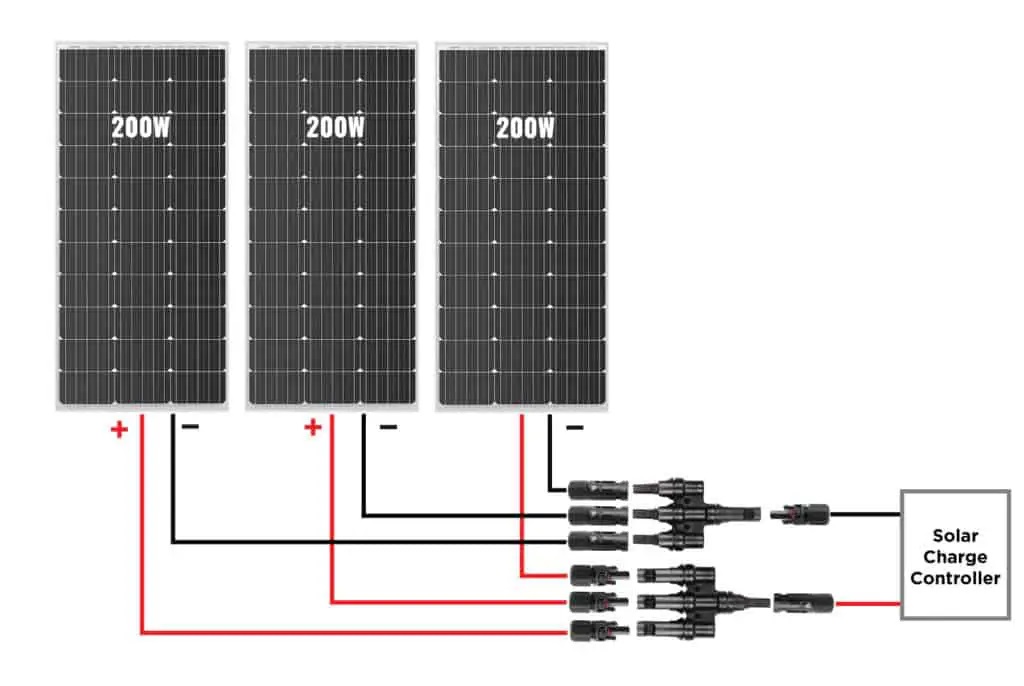Connecting solar panels in series and in parallel have their own advantages and disadvantages. Here are the disadvantages of each connection method:
Disadvantages of Connecting Solar Panels in Series:
- Voltage Mismatch: When you connect solar panels in series, the voltages of each panel add up. This can be a problem if the panels have different levels of efficiency or if one panel is shaded or dirty. The lowest-performing panel can significantly affect the entire string’s output.
- Shadow and Dust Issues: If one panel in a series is partially shaded or covered in dust, it can decrease the overall power output of the entire series. This is because the current passing through the shaded or dirty panel is limited, and it affects all panels in the series.
- Higher Voltage: Series connections result in a higher overall voltage. While this can be advantageous in some situations, it can also lead to increased safety concerns, especially if the system isn’t properly designed and protected against overvoltage.
- Mismatched Panels: Over time, as panels degrade or if you need to add new panels to your system, it can be challenging to find panels with identical voltage characteristics to match those already in the series. This can limit your ability to expand or maintain the system.
Disadvantages of Connecting Solar Panels in Parallel:
- Voltage Matching: In parallel connections, the voltage of all panels is the same. This can be advantageous for mismatched panels since the lowest-performing panel won’t drag down the performance of the others. However, it can also result in a lower overall system voltage, which might require larger wire sizes and potentially limit the distance between the panels and the inverter.
- Current Imbalance: If panels in parallel have slight differences in their current output due to manufacturing variations or degradation, the panel with the highest current output will limit the overall current for the parallel circuit. This can lead to suboptimal power generation.
- Complexity: Parallel connections often involve more complex wiring, as each panel has its own connection to the inverter or charge controller. This can make installation more challenging and may require more wiring and connectors.
- Inverter Compatibility: Some inverters may be designed specifically for series connections, and using them in parallel configurations might not be as efficient or could require additional equipment.
In practice, the choice between series and parallel connections depends on various factors, including the specific system requirements, the characteristics of the solar panels, shading conditions, and system design. Many solar installations use a combination of series and parallel connections to strike a balance between voltage, current, and performance considerations. Proper design and system sizing, along with regular maintenance, can help mitigate the disadvantages associated with either connection method.


